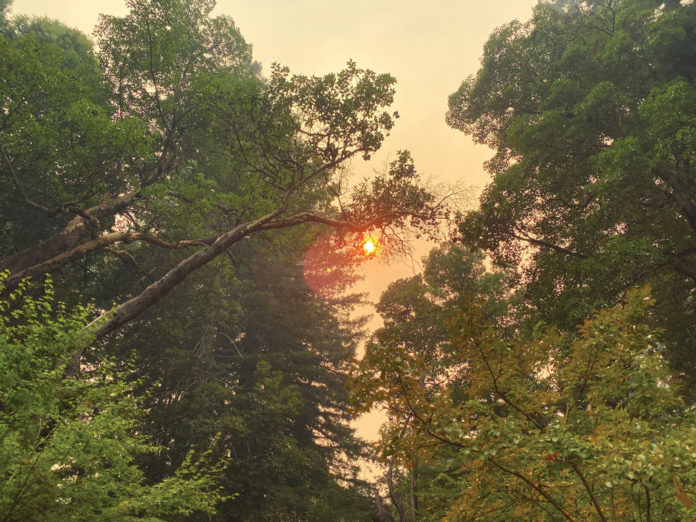
My friend Evan is a computer whiz and designed my website and blog. He is often researching on the internet and forwards me interesting tidbits of information about plants whenever he comes across something exceptional. I am always amazed at what nature does to survive and prosper. Here are just a few interesting facts you might find fascinating, too.
Did you know that trees don’t like wildfire smoke anymore than we do? From a publication called The Conversation (theconversation.com), which features science and technology articles written by experts, I learned the following facts:
When smoke overwhelmed a research site in Colorado that was studying air quality and ecological effects of wildfire smoke, atmospheric and chemical scientists were able to watch in real time how the leaves of the nearby pine trees responded. Turns out, “They responded a bit like us. Some trees essentially shut their windows and doors and held their breath.”
Plants have pores on the surface of their leaves called stomata, which take in carbon dioxide and release oxygen as well as other chemicals in the air around them. Smoke from recent wildfires shows up even in grapes and affects the taste of wine.
When wildfire smoke travels long distances, the smoke cooks in sunlight and chemically changes. Mixing volatile organic compounds, nitrogen oxides and sunlight will make ground level ozone, which can cause breathing problems as well as slowing photosynthesis in plants.
The research group in Colorado didn’t set out to study the effects of wildfire smoke on plants. As we know too well, 2020 was a bad year for wildfires. When thick smoke came through the field where they were working, they did their usual tests to measure leaf level photosynthesis of Ponderosa pines. They were surprised to discover that the tree’s pores were completely closed and photosynthesis was nearly zero. The trees weren’t inhaling the carbon dioxide they needed to grow and weren’t exhaling the chemicals they usually do. They were effectively holding their breath but not before having been exposed to the smoke.
It’s unknown how long the effects of wildfire smoke lasts or how repeated smoke events affect plants, including trees and crops.
From a newsletter called Aeon, I was reminded of the extraordinary complexity of plants’ behavior and the relationship with their environments, each other and with other living beings.
For instance, most plants respond to damage to their leaves by releasing volatile organic compounds (VOCs). Some of these activate stress related genes, some have antibacterial and antifungal properties. Some VOCs specifically repel the attacking herbivore with nasty taste or toxins and some plants can identify which specific herbivore is attacking and produce different responses accordingly. Even more interesting, some VOCs attract predators of the insects that are attacking the plant. An attack by an herbivore can also induce the plant to produce more nectar, which encourages insects easily from the leaves.
I won’t go into the philosophy of plant behavior outlined in the article, but it was most interesting. But that’s all for now.
Jan Nelson, a landscape designer and California-certified nursery professional, will answer questions about gardening in the Santa Cruz Mountains. Email her at ja******@*ol.com, or visit jannelsonlandscapedesign.com.












